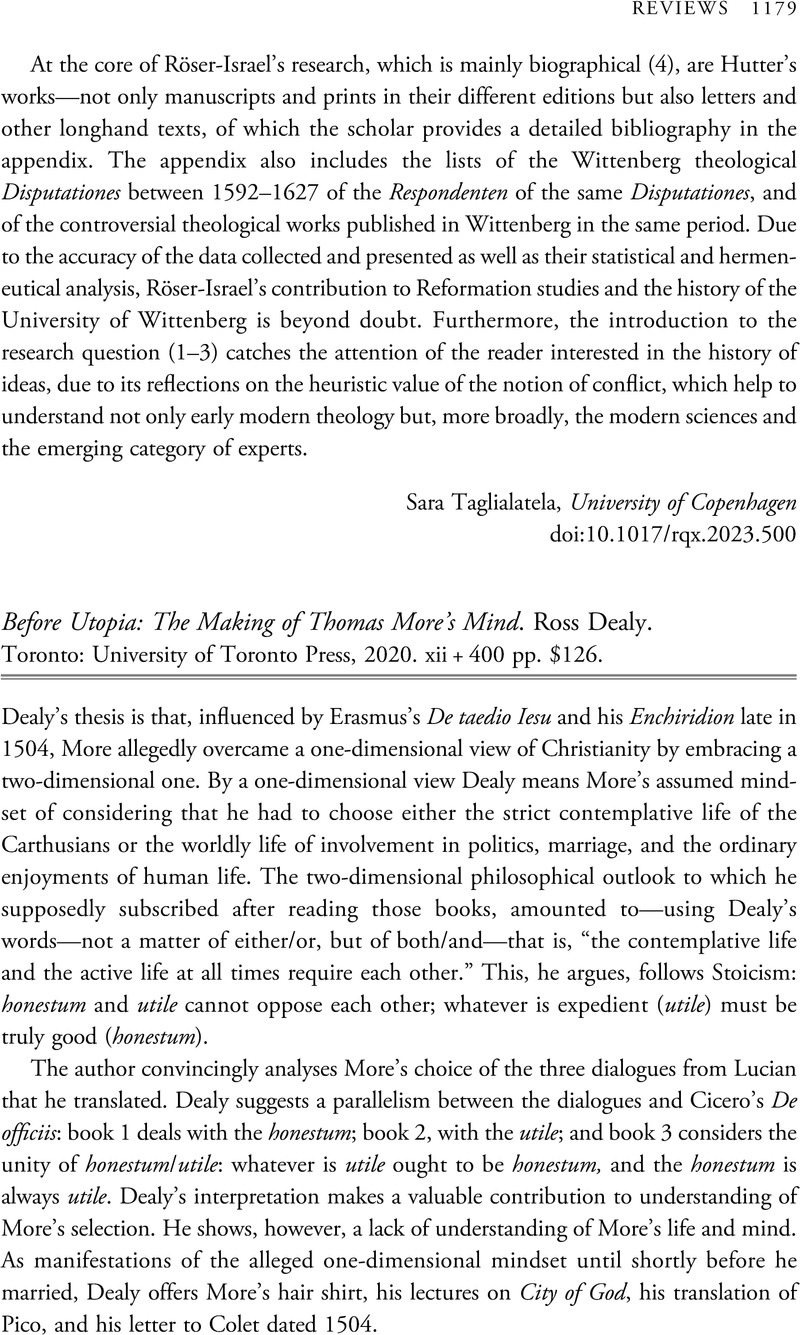No CrossRef data available.
Article contents
Before Utopia: The Making of Thomas More's Mind. Ross Dealy. Toronto: University of Toronto Press, 2020. xii + 400 pp. $126.
Review products
Before Utopia: The Making of Thomas More's Mind. Ross Dealy. Toronto: University of Toronto Press, 2020. xii + 400 pp. $126.
Published online by Cambridge University Press: 15 November 2023
Abstract
An abstract is not available for this content so a preview has been provided. Please use the Get access link above for information on how to access this content.

- Type
- Review
- Information
- Copyright
- Copyright © The Author(s), 2023. Published by the Renaissance Society of America



